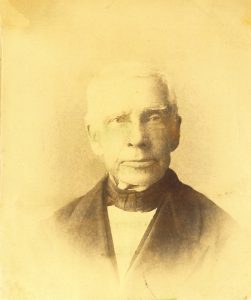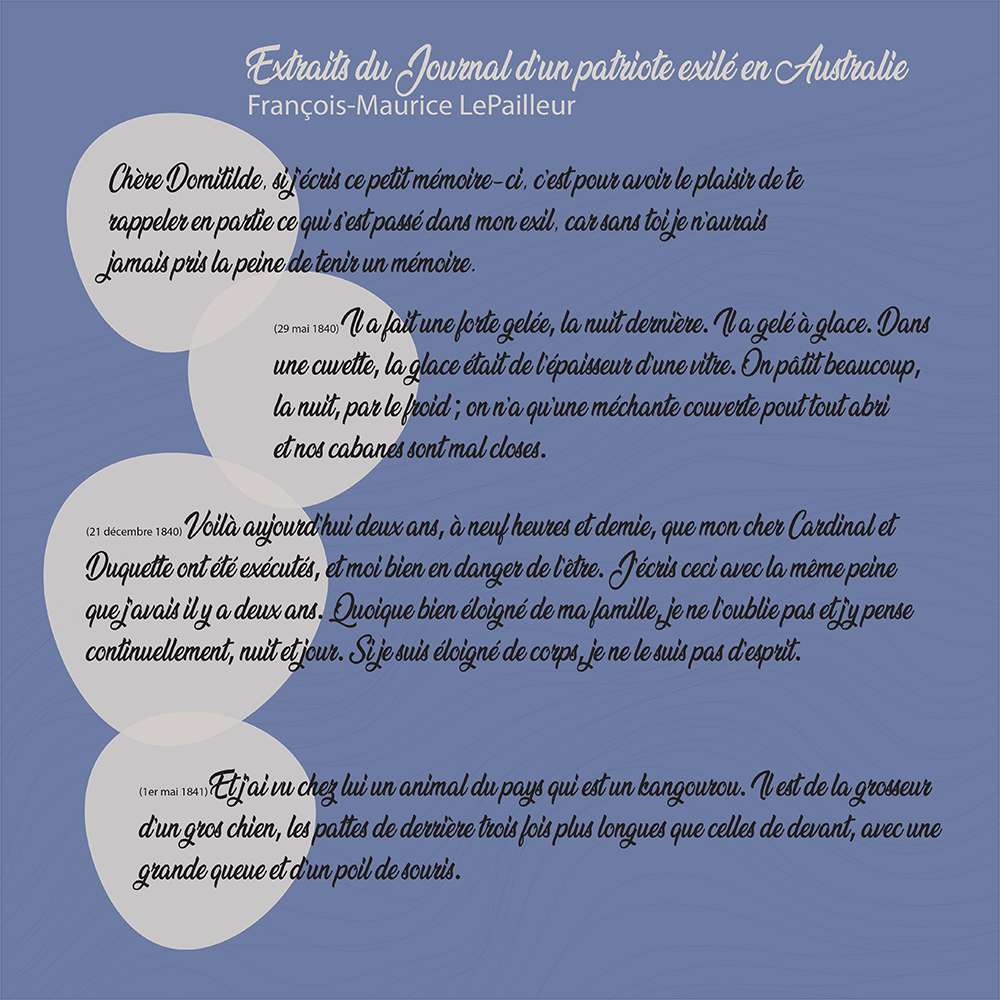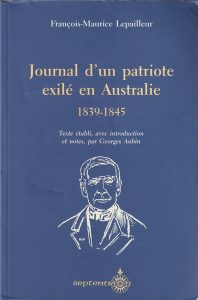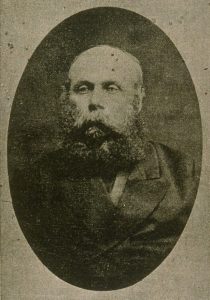The exile of a LePailleur
François-Maurice tried to survive the difficult conditions of his exile
Following the patriot insurrections, the British government took several actions to curb the ardour of the rebels. In addition to imprisoning hundreds of men and seizing their property, 12 leaders were hanged. Luckier ones saw their death penalty commuted to life in exile in Australia, which, at that time, was a British colony harboring some prison camps for convicted criminals.
On September 28, 1839, 58 patriot prisoners boarded the HMS Buffalo for a 151-day voyage. Conditions on board were difficult, passengers were malnourished, vermin were omnipresent and hygiene, almost absent, permissions to climb on the deck were rarely given and living spaces were overcrowded.
Among the hundreds of men on board was François-Maurice LePailleur, son of notary François-Georges from Châteauguay. Since he had the good fortune to know how to read and write, LePailleur put his knowledge to good use by, among other things, keeping a diary that he began from the moment he boarded the ship and ended on his return from exile.
While in Australia, LePailleur participated in the forced labour imposed on prisoners. Over time, local authorities realized that patriot political prisoners did not pose a risk to the safety of the residents. They were then given more freedom and even managed to find paid jobs.
LePailleur started to paint buildings and was able to earn a little money. He also had other small jobs to improve his conditions. Since he could read and write, he was often solicited by his companions who wanted to correspond with their relatives, hoping that they would receive their letters. Nearby residents also used the services of LePailleur to write various documents. The savings he accumulated from these small works were put aside in the hope of being able to pay for his return ticket, which he finally did on July 8, 1844.
After a trip through London and New York, LePailleur and 27 of his companions finally arrived in Lower Canada, which was known as Canada East in United Canada. Some of the exiles, including his friend F.-X. Prieur, had to wait a bit longer before being able to return.
The country that LePailleur knew had changed a lot during his absence. As a result of his involvement in the rebellions, he lost everything and had to relearn to live in this unknown land and reconnect with his loved ones, including his two sons who were now 8 and 12 years old. During his forced exile, his wife Domitilde had to support their children and survive the difficult conditions imposed on the families of the condemned. Upon his return, François-Maurice resumed his occupation as bailiff, and then moved with his family to live with relatives in Montréal. He struggled for several years to rebuild his life, and then his dear Domitilde died at the age of 49. He then decided to marry the widow of his best friend and brother-in-law, Joseph-Narcisse Cardinal, who had been executed 18 years earlier.
François-Maurice never knew this, but his sacrifice and that of his companions helped to establish the Canadian democracy we know today.






